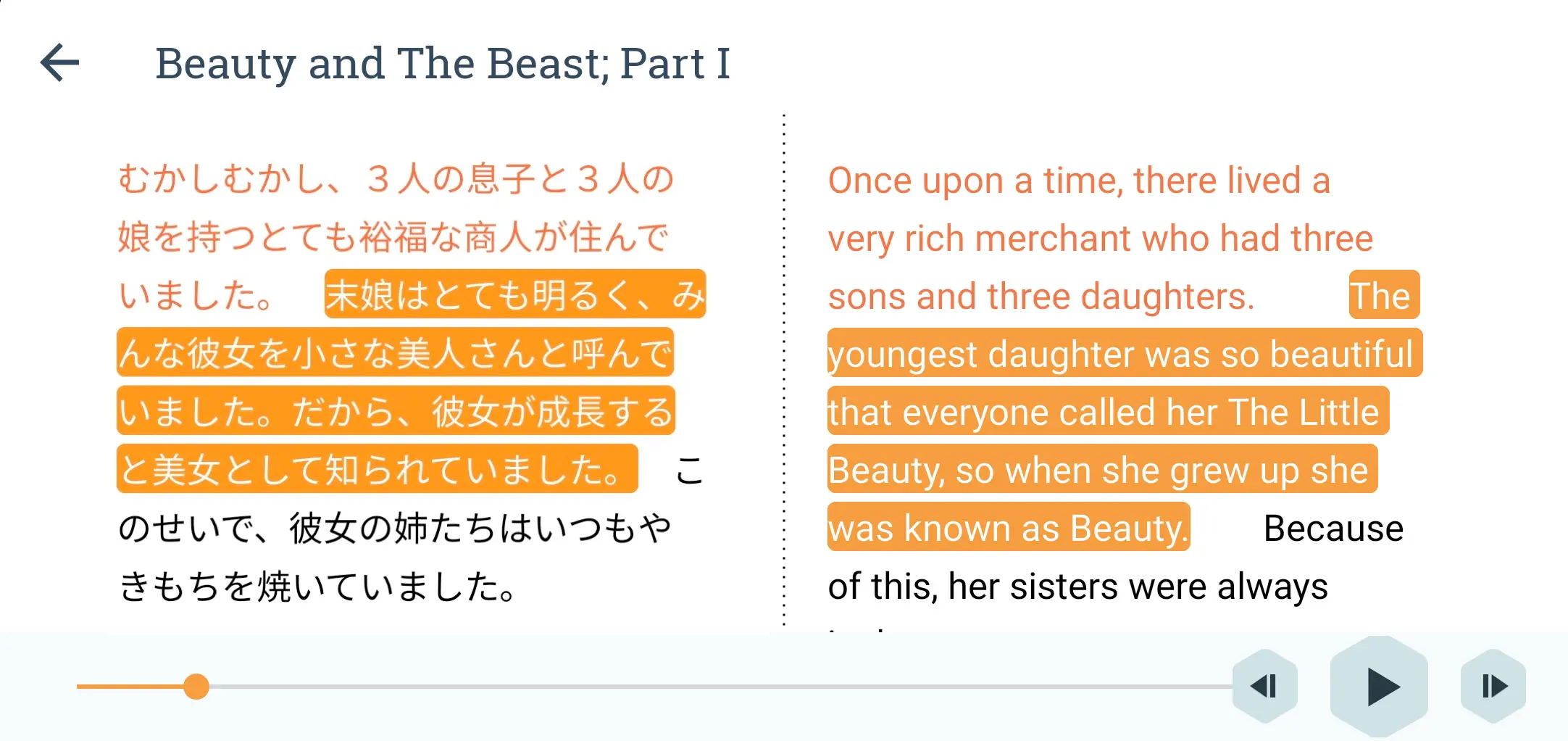Learn Japanese with Beelinguapp
The Japanese language has never been easier than this. Just read fun and entertaining texts. Understand the symbols and practice your pronunciation at the same time with Beelinguapp’s japanese lessons.
Learn Japanese










The Japanese language has never been easier than this. Just read fun and entertaining texts. Understand the symbols and practice your pronunciation at the same time with Beelinguapp’s japanese lessons.
Learn Japanese










More than 4 Million downloads and 60,000 ratings on Google Play and Apple App Store can't be wrong.
Download the AppExactly as the pictures show. Interesting method in teaching bilingual readings. Wide variety of material without downplaying the virtual assistant directs us in the methodology adopted in teaching and reinforcing the chosen language. It's a good tool for both learning and for improving the language, based on reading (and phonetic) in parallel ... Thank you ! I think the course is excellent.

The app is useful for reading material such as current news and stories. Recently watching ads to get access to certain material has occurred but overall as long as it stays quality, free, and does what it's suppose to without becoming ad-city I am on board for a few more years!

The more motivated you are to learn Japanese, the faster you will progress.
The first thing a Japanese learner will notice is the difference in phonetics between Japanese and other languages. Some of the sounds are unique. Practice is the most effective way to learn Japanese sounds. Practice them as you memorize the kana after you've learned how to pronounce the Japanese language correctly.
Japanese is an Asian language spoken by about 128 million people.
There is little information available about the language's prehistory or when it first appeared in Japan.
It has no ancestors in Chinese, but it uses Chinese characters in writing and borrows much of its vocabulary from Chinese.
Japanese has a lexically significant pitch accent and simple phonotactics. Subject–object–verb is the most common word order, and topic–comment is the most common sentence structure. Sentence-final particles are used to add emotional or emphatic impact, as well as to ask questions. There is no grammatical number or gender for nouns, and there are no articles.
Verbs are conjugated for tense and voice, but not for person. Adjectives in Japanese are conjugated as well. The honorific system in Japanese is complex, with verb forms and vocabulary used to indicate the relative status of the speaker, listener, and people mentioned.
Following the end of Japan's self-imposed isolation in 1853, there was a significant increase in the flow of loanwords from European languages. English loanwords, in particular, have proliferated, as have Japanese words with English roots.
Beelinguapp's one-of-a-kind method enables you to learn Japanese fluently by displaying text in both your native language and Japanese. You will also improve your listening and speaking skills as a result of our unique audiobook feature with karaoke animation, which allows you to follow the text while learning.